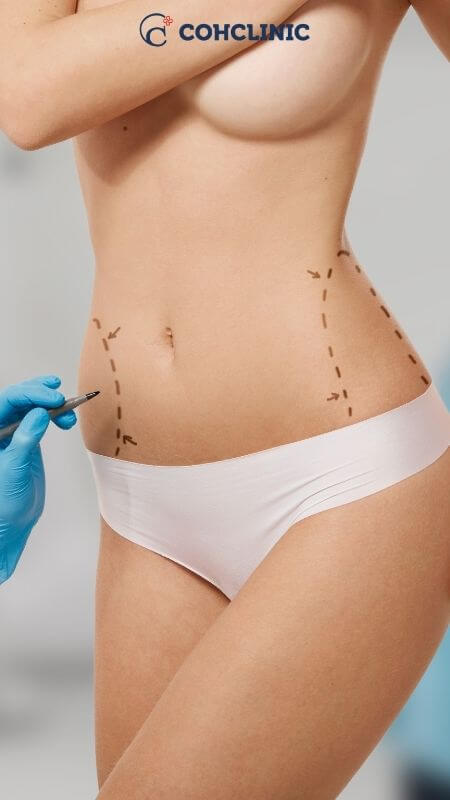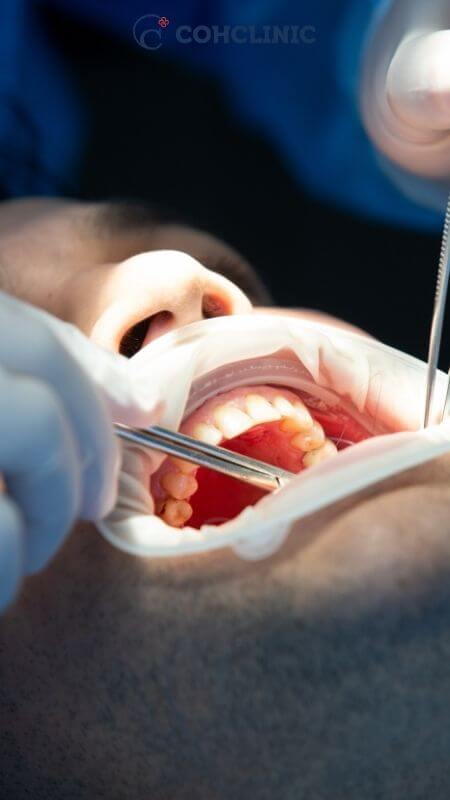Reduction mammoplasty, commonly referred to as breast reduction surgery, is a medical procedure that involves the removal of fat, glandular tissue, and skin from the breasts. People with excessively large breasts usually consider this surgery to relieve physical discomfort and enhance the appearance of the chest area.
What is Breast Reduction Surgery?
Breast reduction surgery, also known as reduction mammoplasty in medical terms, is a specialized procedure designed to achieve a more proportionate breast size in the patient’s body. Its primary objective is to address the adverse effects stemming from huge breasts, a condition known as macromastia. The presence of disproportionately large breasts can lead to an array of issues, such as postural difficulties, physical discomfort, psychological distress, and chronic pains. Furthermore, individuals with oversized breasts often find their participation in routine physical activities restricted, and may commonly experience chronic back pain. Beyond the physical implications, the aesthetic concerns associated with overly large breasts can also significantly impact an individual’s self-esteem and overall comfort.

By opting for breast reduction surgery, patients can find relief from these debilitating symptoms and improve their overall quality of life. This procedure is not solely limited to those experiencing physical symptoms, as individuals dissatisfied with the size of their breasts but devoid of specific medical concerns also consider this surgical option as a means to achieve their desired aesthetic goals.
How is Breast Reduction Surgery Performed?
Surgeons perform boop reduction surgery on patients under the effects of general anesthesia, and the procedure typically takes anywhere from 2 to 5 hours. Various surgical techniques are available, and the choice depends on the specific size and shape of the patient’s breasts.
Reduction mammoplasty techniques include:
- Liposuction Method: This method involves the insertion of a tube connected to a vacuum device through small incisions in the targeted area. The tube is used to extract fat and fluids from the breast. It is usually favored when a minor reduction is required, meaning that the breast is relatively smaller and the skin is deemed capable of accommodating the adjustment.
- Lollipop Method or Vertical Incision: Employed for moderate reductions or when addressing breast sagging, this technique involves the surgeon making incisions encircling the areola and extending downwards to the base of the breast. Excess tissue and fat are removed, while the breast is reshaped and lifted accordingly.
- Reverse T Incision method (Anchor Method): Particularly suitable for substantial breast reductions and cases involving significant sagging or asymmetry, this method requires the surgeon to create incisions along the lower breast fold, extending towards the base of the areola.
Given that breast reduction surgery is a significant surgical procedure necessitating the use of general anesthesia, patients typically remain in the hospital for at least one day following the operation. This allows for post-operative monitoring and initial recovery management under the supervision of medical professionals.
Can everyone get a breast reduction?
Doctors usually suggest breast reduction surgery for individuals experiencing problems associated with excessively large breasts, such as:
- Chronic back, neck, and shoulder pain.
- Indentations on the shoulders from bra straps.
- Persistent rash or skin irritation beneath the breasts.
- Nerve pain.
- Limitations in participating in certain physical activities.
- Negative self-perception attributed to the size of the breasts.
- Difficulty in finding well-fitting bras and clothing.
However other problems could make people less likely to get breast reduction surgery. They consist of:
- Smoking habits can potentially impair the healing process.
- Being severely obese can increase the risk of complications during surgery.
- Unwillingness to accept potential scarring on the breasts following the surgery.
Although breast reduction surgery is feasible at any age, including during adolescence, it is important to consider that incompletely developed breasts may necessitate additional surgeries in the future to sustain the desired outcomes.
Certain situations exist when delaying breast reduction surgery could be prudent. These include:
- Plans to conceive: it’s important to note that breastfeeding might be challenging following the surgery, although some surgical techniques can help retain the ability to breastfeed.
- Intentions to lose weight: weight changes can significantly impact breast size; therefore, weight loss efforts are generally recommended before breast reduction surgery.
Is it worth it to get a breast reduction?
- Breast reduction brings your breasts into better proportion with the size of your body.
- It alleviates uncomfortable physical symptoms such as headaches, rashes, deep bra strap grooves, and shoulder, back, and neck pain brought on by disproportionately big breasts.
- According to studies, the process improves patients’ quality of life, confidence, and sense of self.
- Surgeons often perform areola reduction simultaneously with the breast procedure to give the breasts a more youthful, fuller, and perkier appearance.
- Breast reduction surgery may even decrease the risk of developing breast cancer.
What are the disadvantages of breast reduction?
Selecting a trustworthy plastic surgeon demands careful deliberation due to the potentially serious consequences of making the wrong choice. Opting for an inexperienced surgeon may result in post-operative discomfort, complications, or an unsuccessful procedure.
During the recovery period, which typically lasts two to four weeks, individuals should avoid engaging in strenuous physical activities and lifting heavy objects. Balancing this recovery period with any physically demanding obligations or the inability to take time off work can pose challenges.
Scars may remain after plastic surgery. Most of the time, scarring lessens or goes away, however, this may not happen to every patient. Additionally, breast reductions might lessen nipple sensitivity. Due to tissue removal, a breast reduction may prevent you from producing enough milk if you are breastfeeding or intend to nurse your child. Although it is not a given, considering the prospect of breastfeeding in the future should be part of your preoperative planning if it is a top priority for you.
Is reduction mammoplasty safe?
Similar to other major surgeries, breast reduction surgery can lead to various potential side effects, including but not limited to:
- Excessive bleeding during or after the surgery.
- Possibility of developing an infection at the site of the incision or within the surgical area.
- Complications related to the administration of anesthesia.
- Temporary discoloration of the skin, commonly known as bruising.
- Formation of scars at the site of the incisions, although the degree of scarring may vary from person to person.
- Potential difficulties or the inability to breastfeed due to changes in the breast tissue.
- Differences in the size, shape, or appearance of the left and right breasts following the surgery.
- Possible dissatisfaction with the aesthetic outcome of the procedure.
- In rare cases, there may be risks of complications such as partial or complete loss of the nipples or changes in nipple sensation.
Breast Reduction vs. Breast Lift
The majority of women get breast reductions when their enormous breasts become painful in the neck, shoulders, or back which makes it difficult for them to exercise. On the other hand, a breast lift makes the breasts seem more young and erect by removing extra skin and contouring the breast tissue that remains.
Reduction Mammoplasty vs. Mastectomy
Because a breast reduction operation entails preserving vascularity to the nipple/areola and generating a beautiful breast form, it is more technically challenging than a mastectomy. During a mastectomy, the entire breast, including the underlying muscle, is removed. In either procedure, there is no surgery on the muscle itself.
Schedule a Consultation with COH Clinic Today
Breast reduction surgery has notable benefits such as reducing breast size, re-centering nipples, and effectively treating male breast enlargement. Its popularity among celebrities speaks to its success. However, it’s important to weigh potential drawbacks such as scarring and breastfeeding challenges. Feel free to contact us at +90 (536) 934 6524 for more information.
Frequently Asked Questions
Do breasts grow back after reduction?
Do breasts grow back after reduction?
According to research, breast regrowth following reduction surgery is uncommon and usually results in a small rise in size. According to research, about one in five patients showed signs of breast regrowth, albeit with just a small rise in size.
Does breast reduction hurt a lot?
Does breast reduction hurt a lot?
You will be under anesthesia during the process, but following surgery, you may anticipate soreness for two to three days. To aid with pain and swelling, your surgeon may suggest applying carefully wrapped ice packs to sensitive regions in addition to prescribing pain medication.
Do you lose your nipples after breast reduction?
Do you lose your nipples after breast reduction?
While the complete loss of the nipple and areola is uncommon, it may necessitate a second operation if it occurs.
Why are my breasts so hard after breast reduction?
Why are my breasts so hard after breast reduction?
Following surgery, the breast's fat tissue can occasionally develop hard, painful lumps. We refer to this as fat necrosis. Over time, these lumps often resolve on their own (which may take many months). Sometimes more surgery is necessary to remove particularly problematic spots.
Why do my breasts still look big after the reduction?
Why do my breasts still look big after the reduction?
It is uncommon for the breasts to revert to their initial size following breast reduction, but there are a few reasons why they may grow after the procedure. Although the effects of breast reduction are usually permanent, weight gain, menopause, and pregnancy might cause the breasts to grow again.
What do I wish I had known before breast reduction?
What do I wish I had known before breast reduction?
After the surgery, you may need to take one to two weeks off work, depending on the extent of your breast reduction. Aside from a little daily walking to encourage blood flow, you won't be able to work out or engage in any rigorous activities for around a month.
How big do your breasts need to be to get a reduction?
How big do your breasts need to be to get a reduction?
Because it depends on individual body proportions and preferences, there is no specific minimum breast size for reduction. Surgeons typically recommend that patients be at least a C cup or larger to qualify for breast reduction surgery.







